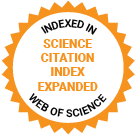Journal of Medical Internet Research
The leading peer-reviewed journal for digital medicine and health and health care in the internet age.
Editor-in-Chief:
Gunther Eysenbach, MD, MPH, FACMI, Founding Editor and Publisher; Adjunct Professor, School of Health Information Science, University of Victoria, Canada
Impact Factor 6.0 CiteScore 11.7
Recent Articles

Access to and the ability to work with Tribal data can vastly improve the ability of Tribal Nations to support their citizens’ health and wellbeing. In this commentary we expand on previous calls for state and federal public health agencies to share data by default with Tribes. Previous work has described the legal and ethical lay of the land concerning public health data sharing while underscoring the importance of respect for Tribal sovereignty. In this commentary, we expand on this argument by proposing additional ways in which data can benefit Tribes and critical steps for Tribes to fully benefit from Tribal data. Specifically, we argue for: 1) renewed interest and investment in Tribal data science education, 2) proactive data practices, laws, and policies that support long-term health and wellbeing, and 3) the federal government honoring its trust responsibility to support Tribal data resources.

Health care providers are at the forefront of the digital health transformation underway in low- and lower-middle-income countries (LLMICs). Digital health innovations (DHIs) promise more efficient and equitable health care delivery. However, their implementation often outpaces the generation of evidence supporting their effectiveness, resulting in fragmented projects that are poorly aligned with local system needs. Recognizing the diverse ways DHIs are used, the World Health Organization introduced a revised Classification of Digital Health Interventions in 2023 identifying 4 primary user groups, including health care providers.

Men’s health, particularly in the domain of urology, faces significant challenges in access to care, patient outcomes, and cost efficiency. Despite advances in medical treatment, conditions such as prostate cancer remain a leading cause of cancer death among men, with African American men disproportionately affected at twice the mortality rate of other groups. Compounding these challenges is a critical shortage of urologists, with 62% of U.S. counties lacking a practicing urologist and only one new urologist entering the field for every ten retiring. This shortage results in delayed diagnoses, increased rates of advanced-stage conditions, and significant health disparities. To address these pressing issues, telehealth and technology-based integrated care models present a promising solution. Telehealth expands access to specialized urological care by overcoming geographical barriers and offering virtual consultations, at-home diagnostics, and continuous patient engagement. AI-driven tools further enhance the efficiency and accuracy of care delivery, improving provider experience by automating administrative tasks and facilitating early intervention through predictive analytics. Furthermore, remote patient monitoring devices provide accurate, cost-effective and highly accessible alternatives. These innovations reduce provider burnout, lower healthcare costs, and, critically, improve patient outcomes. This article explores the potential of telehealth and integrated care in men’s health urology as a practical pathway to bridging access gaps, enhancing care quality, and achieving cost savings. By leveraging digital health solutions, healthcare systems and employers can promote health equity, increase engagement, and ensure that all men receive timely and effective urological care.

Disinformation on social media can seriously affect mental health by spreading false information, increasing anxiety, stress, and confusion in vulnerable individuals as well as perpetuating stigma. This flood of misleading content can undermine trust in reliable sources and heighten feelings of isolation and helplessness among users.

The global population is aging rapidly, with projections indicating a doubling of older adults by 2050. Among the chronic conditions affecting this demographic, diabetes stands out due to its prevalence and impact on health. Mobile health (mHealth) app interventions show promise in improving health outcomes, leveraging the widespread adoption of smartphones among older adults.

Digital health interventions, especially mobile applications, have become instrumental in helping women at risk of polycystic ovary syndrome (PCOS), increasing their understanding of the condition, improving self-care, and fostering empowerment. However, their rapid proliferation has brought about significant challenges regarding quality assessment and evidence-based determination. Therefore, establishing reliable quality assessment methods is essential to assist PCOS patients in identifying effective and trustworthy mobile health tools.

The present study aimed to: 1) determine the prevalence and sociodemographic predictors of using sleep wearables in Canada, 2) evaluate the perceived effects of wearable use on sleep and stress, 3) compare sleep and healthcare-seeking behaviours in users and non-users, and 4) investigate the moderating effects of wearable use on the association between sleep and anxiety.

The importance of social connectedness as a determinant of health and well-being in older adults is well-established. Ecological momentary assessment (EMA) shows promise for real-time measurement of social interactions, making it worthwhile to investigate its feasibility and the challenges of applying it to older adults.
Preprints Open for Peer-Review
Open Peer Review Period:
-
Open Peer Review Period:
-
Open Peer Review Period:
-
Open Peer Review Period:
-
Open Peer Review Period:
-




















